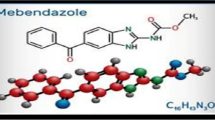Summary
Toosendanin, a triterpenoid derivative isolated from the barks of Melia toosendan Sieb et Zucc, has been used as an anthelmintic vermifuge against ascaris for more than fifty years in China. In the present study, we investigated the growth inhibition and apoptosis-induced effect of toosendanin on human cancer cells. The result showed that toosendanin significantly suppressed the proliferation of tested human cancer cell lines. The IC50 values were less than 1.7 × 10−7 M and U937 was the most sensitive cell line with a IC50 of 5.4 × 10−9 M. Flow cytometric analysis revealed that treatment of U937 cells with toosendanin resulted in a dose- and time-dependent accumulation of cells in the S phase with a concomitant decrease in cells processing to G0/G1 phase. The growth inhibition of U937 cells after exposure to toosendanin was subsequently associated with the induction of apoptosis, as evidence by the typical condensed and fragmented nuclei, DNA fragmentation, and exposure of phosphatidylserine on the outer leaflet of plasma membrane. All these results indicated that toosendanin could serve as a potential candidate for anticancer drug.
Similar content being viewed by others
References
Wang YB, Wen YX: A comprehensive report on clinical ascaris anthelmintix therapeutic effect of toosendanin pills. J Tradit Chin Med 262: 46–49, 1959
Chung CC, Hsie TH, Chen SF, Liang HT: The structure of Chuanliansu. Acta Chim Sin 33: 35–47, 1975
Shu GX, Liang HT: A correction of structure of Chuanliansu. Acta Chim Sin 38: 190–198, 1980
Chen WY, Shi YL: The morphological changes induced by toosendanin on NG108-15 and SK-N-SH cells. Chin J Anta 23: 1–5, 2000
Tang MZ, Wang ZF, Shi YL: Toosendanin induces outgrowth of neuronal processes and apoptosis in PC12 cells. Neurosci Res 45: 225–231, 2003
Kim YS, Jin SH, Lee YH, Kim SI, Park JD: Ginsenoside Rh2 induces apoptosis independently of Bcl-2, Bcl-xL, or Bax in C6Bu-1 cells. Arch Pharm Res 22: 448–453, 1999
Ahmad N, Feyes DK, Nieminen AL, Agarwal R, Mukhtar H: Green tea constituent epigallocatechin-3-gallate and induction of apoptosis and cell cycle arrest in human carcinoma cells, J Natl Cancer Inst 89: 1881–1886, 1997
Wright SC, Zhong J, Larrick JW: Inhibition of apoptosis as a mechanism of tumor promotion. FASEB J 8: 654–660, 1994
Xu YF, Shi YL: Action of toosendanin on the membrane current of mouse motor nerve terminals. Brain Res 631: 46–50, 1993
Hu Q, Huang FS, Shi YL: Inhibition of toosendanin on the delayed rectifier potassium current in neuroblastoma × glioma NG108-15 cells. Brain Res 751: 47–53, 1997
Shi YL, Chen WY: Effect of toosendanin on acetylcholine level of rat brain, a microdialysis study. Brain Res 850: 173–178, 1999
Mosmann T: Rapid colorimetric assay for cellular growth and survival: Application to proliferation and cytotoxicity assays. J Immunol Methods 65: 55–63, 1983
Hansen MB, Nielsen SE, Berg K: Re-examination and further development of a precise and rapid dye method for measuring cell growth/cell kill. J Immunol Methods 119: 203–210, 1989
Davis RW, Thomas M, Cameron J, John HT, Scherer S, Padge RA: Rapid DNA isolation for enzymatic and hybridization analysis. Methods Enzymol 65: 404–411, 1980
Vindelov LL, Chistensen IJ, Nissen NI: A detergent-trypsin method for the preparation of nuclei for flow cytometric DNA analysis. Cytometry 3: 323–327, 1983
Dive C, Gregory CD, Phipps DJ, Evans DL, Milner AE, Wyllie AH: Analysis and discrimination of necrosis and apoptosis (programmed cell death) by multiparameter flow cytometry. Biochim Biophy Acta 1133: 275–285, 1992
Turly JM, Sanders BG, Kline K: RRR-α-tocopheryl succinate modulation of human promyelocytic leukemia (HL-60) cell proliferation differentiation. Nutr Cancer 18: 201–213, 1992
Kim HM, Oh GT, Han SB, Hong DH, Hwang BY, Kim YH, Lee JJ: Comparative studies of adriamycin and 28-deacetyl sendanin on in vitro growth inhibition of human cancer cell lines. Arch Pharm Res 17: 100–103, 1994
Takeya K, Quio ZS, Hirobe C, Itokawa H: Cytotoxic trichilin-type limonoids from Melia azedarach. Bioorg Med Chem 4: 1355–1359, 1996
Tada K, Takido M, Kitanaka S: Limonoids from fruit of Melia toosendan and their cytotoxic activity. Phytochemistry 51: 787–791, 1999
Shi YL, Fuyura K, Wang WP, Terakawa S, Xu K, Yamagishi S: Calcium conductance increase by toosendanin in neuroblastama × glioma hybrid cells. Chin Sci Bull 38: 825–828, 1993
Li MF, Wu Y, Wang ZF, Shi YL: Toosendanin, a triterpenoid derivative, increases Ca2+ current in NG108-15 cells via L-type channels. Neurosci Res 49: 197–203, 2004
Li MF, Shi YL: The long-term effect of toosendanin on current through nifedipine-sensitive Ca2+ channels in NG108-15 cells. Toxicon 42: 53–60, 2004
Ye Q, Qu AL, Zhang CG, Xu T, Zhou Z: Effects of toosendanin on the rat chomaffin cells. Chin J Neurosci 17: 105–108, 2001
Xu TH, Ding J, Shi YL: Toosendanin increases free-Ca2+ concentration in NG108-15 cells via L-type Ca2+ channels. Acta Pharmacol Sin 25: 597–601, 2004
Tang MZ, Wang ZF, Shi YL: Involvement of cytochrome c release and caspase activation in toosendanin-induced PC12 cell apoptosis. Toxicology 201: 31–38, 2004
Author information
Authors and Affiliations
Corresponding author
Rights and permissions
About this article
Cite this article
Zhang, B., Wang, ZF., Tang, MZ. et al. Growth Inhibition and Apoptosis-Induced Effect on Human Cancer Cells of Toosendanin, a Triterpenoid Derivative from Chinese Traditional Medicine. Invest New Drugs 23, 547–553 (2005). https://doi.org/10.1007/s10637-005-0909-5
Issue Date:
DOI: https://doi.org/10.1007/s10637-005-0909-5




